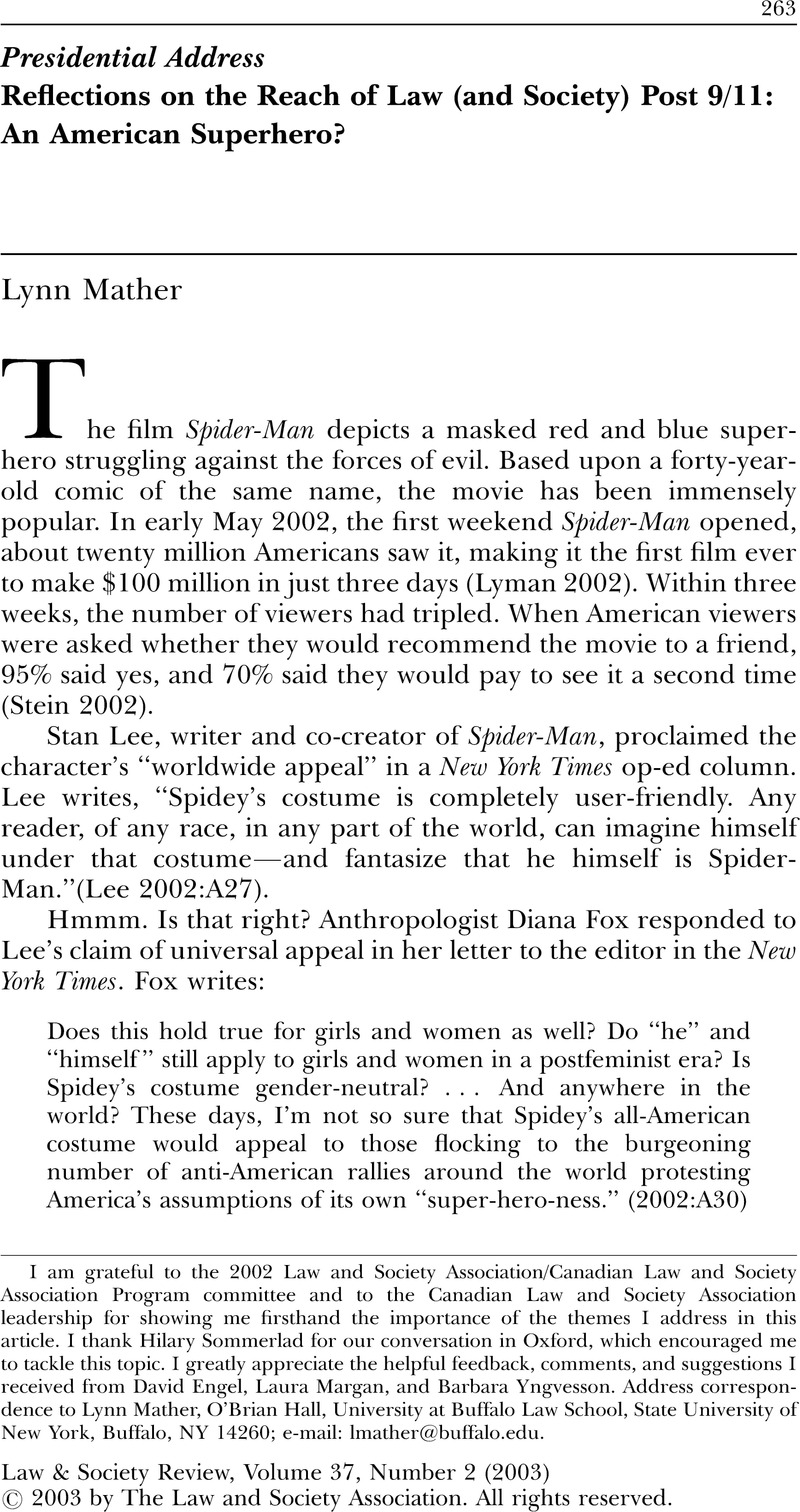Crossref Citations
This article has been cited by the following publications. This list is generated based on data provided by
Crossref.
Garth, Bryant G.
2003.
Law and Society as Law and Development.
Law & Society Review,
Vol. 37,
Issue. 2,
p.
305.
Brockman, Joan
2003.
The Impact of Institutional Structures and Power on Law and Society: Is It Time for Reawakening?.
Law & Society Review,
Vol. 37,
Issue. 2,
p.
283.
Erlanger, Howard S.
2005.
Organizations, Institutions, and the Story of Shmuel: Reflections on the 40th Anniversary of the Law and Society Association.
Law & Society Review,
Vol. 39,
Issue. 1,
p.
1.
Ewick, Patricia
2007.
Special Issue Law and Society Reconsidered.
Vol. 41,
Issue. ,
p.
1.
von Benda-Beckmann, Franz
2008.
Riding or killing the centaur? Reflections on the identities of legal anthropology.
International Journal of Law in Context,
Vol. 4,
Issue. 2,
p.
85.
Abel, Richard L.
2010.
Law and Society: Project and Practice.
Annual Review of Law and Social Science,
Vol. 6,
Issue. 1,
p.
1.
Gómez, Laura E.
2012.
Looking for Race in All the Wrong Places.
Law & Society Review,
Vol. 46,
Issue. 2,
p.
221.
Seron, Carroll
Coutin, Susan Bibler
and
White Meeusen, Pauline
2013.
Is There a Canon of Law and Society?.
Annual Review of Law and Social Science,
Vol. 9,
Issue. 1,
p.
287.
Chua, Lynette J.
2014.
Charting Socio-Legal Scholarship on Southeast Asia: Key Themes and Future Directions.
Asian Journal of Comparative Law,
Vol. 9,
Issue. ,
p.
5.
Zornado, Joseph
and
Reilly, Sara
2021.
The Cinematic Superhero as Social Practice.
p.
55.
